Succulents with pink flowers add a vibrant touch to any garden or indoor space. These resilient plants, known for their water-storing abilities, offer not only striking blooms but also easy maintenance.
From delicate pink blossoms to bold, sunny hues, these succulents bring warmth and cheerfulness to their surroundings, making them a popular choice for both novice and seasoned gardeners alike.
Different Types of Succulent with Pink Flowers
Rose Pincushion cactus (Mammillaria Zeilmanniana)
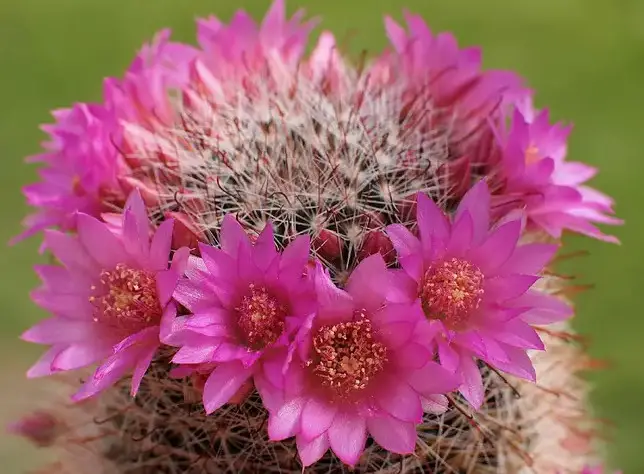
Mammillaria Zeilmanniana, often known as the Rose Pincushion Cactus, has spherical, vivid green bodies with delicate white radial spines and reddish core spines. Its tiny star-shaped flowers, which bloom in shades of pale pink or purple, adorn the plant from May to August.
It grows best in full light and well-draining soil, and it only has to be watered sufficiently when the soil is dry. In the spring, watering should be paused to promote blooming.
Crown of thorns (Euphorbia Milii)
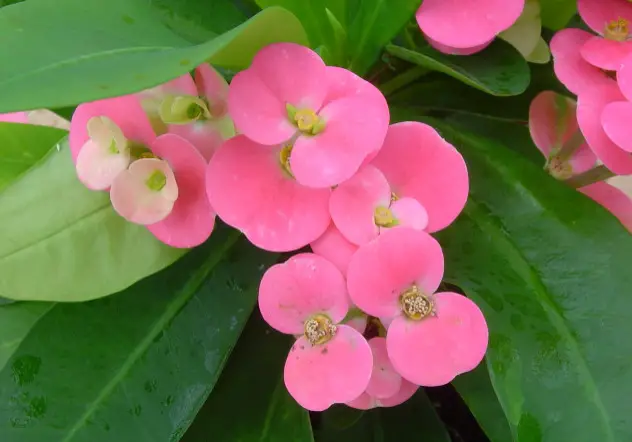
Euphorbia Milii, sometimes known as the Crown of Thorns, is a hardy succulent with bright green leaves accented by sharp thorns and dark brown stalks. From spring to winter, it blooms in red, pink, and yellow bracts and grows best in full sun to light shade.
It can grow to a height of three to six feet outside and stays around two feet tall indoors. Make sure the mixture of coarse sand or perlite and cactus potting soil drains well, and water the soil only when it is completely dry. When this plant receives lots of sunlight, it blooms profusely all year round.
Aloe Vera
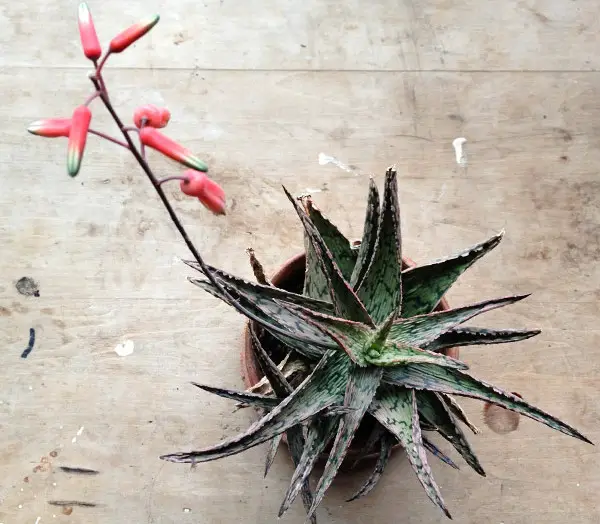
Renowned for its therapeutic qualities, aloe vera has tubular flowers in late winter or early spring and thick, serrated leaves arranged in a rosette arrangement. It needs at least six hours of sunlight per day and does best in potting mix that drains well.
To avoid root rot, water deeply but sparingly, letting the soil dry in between applications. Watering should only be done once every three weeks or fewer throughout the winter.
Zebra plant (Haworthia)
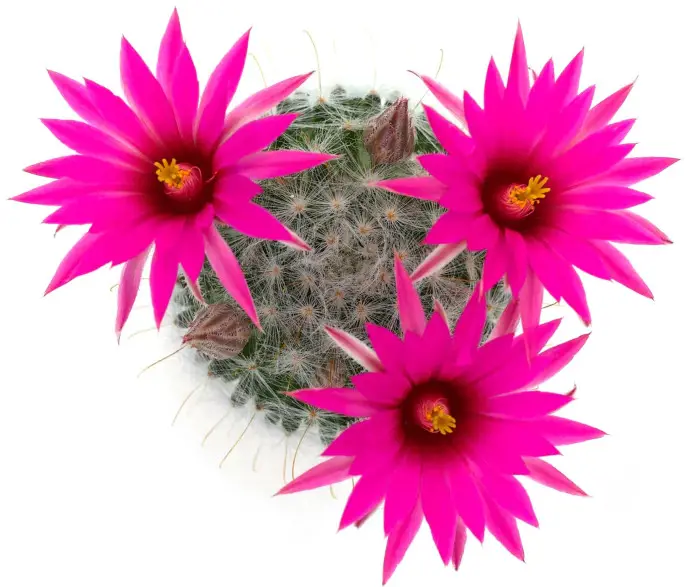
The Zebra Plant, a slow-growing succulent with pink flowers, typically blooms outdoors in summer. Indoors, it rarely flowers. Water only when the soil is dry, using the “soak and dry” method.
Provide 4-6 hours of morning sunlight, avoiding excessive exposure to prevent stress-induced color changes like turning deep red or white and drying out.
Echeveria Peacockii
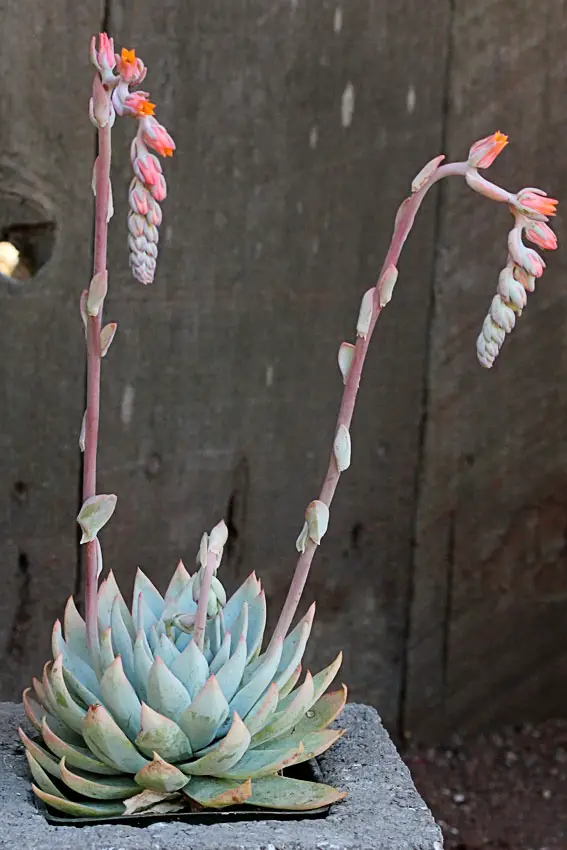
Echeveria Peacockii, a hybrid succulent, showcases blue-gray rosettes with pink flowers on long stems. Blooming in spring and summer, its bell-shaped flowers last weeks to months on a 10-inch stalk emerging from the rosette’s center.
Care involves regular watering, avoiding overwatering, and providing full to partial sun. Well-draining soil mix is essential for its growth.
Echeveria Dusty rose
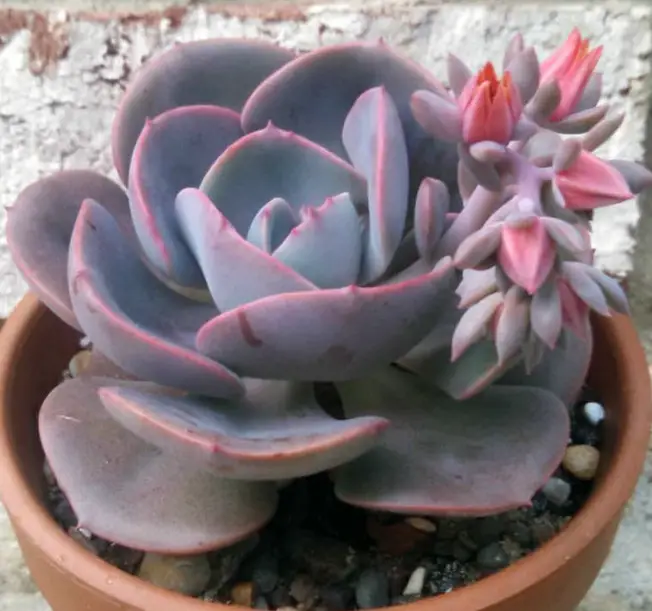
Full to partial sun is ideal for the brilliant purple Echeveria Dusty Rose succulent, which has pink blossoms. Its powdery violet leaves, which grow in eye-catching clusters up to 20 cm in diameter, brighter in the sun. To stop rot, water frequently but do not soak the plants too much.
To protect it from freezing temperatures in the winter, provide well-drained, porous soil and make sure there is plenty of airflow.
Cobweb hens and chicks (Sempervivum Arachnoideum)
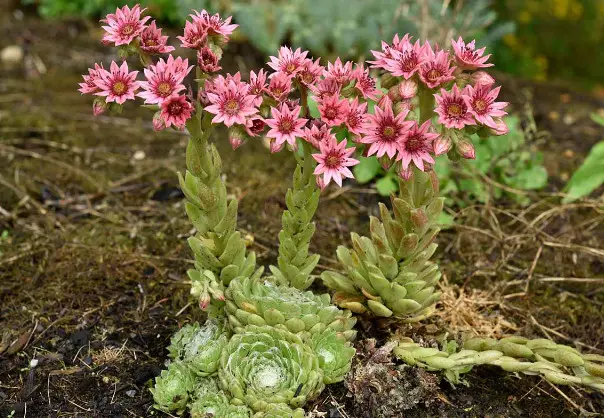
Sempervivum arachnoideum, commonly known as Cobweb Hens and Chicks, are low-growing succulents with green rosettes coated in white, hairy webbing. They grow well in both full and partial shade, and in the summer they produce pink flowers.
They are great as ground coverings and container plants since they are low maintenance and propagate by offsets and pups. Make sure the soil drains properly and that you water it on a seasonal basis.
Echeveria Afterglow
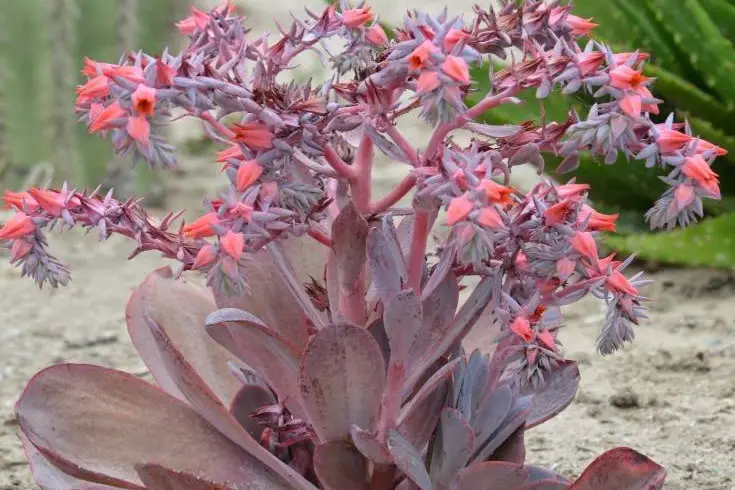
Echeveria Afterglow develops enormous, 12–16-inch rosettes on stems that can reach a height of 1-2 feet. It features brightly edged pinkish-lavender flowers that bloom in the summer.
It needs well-draining soil and full sun to thrive. It also needs regular watering spaced apart by letting the soil dry out in between applications. It’s better to keep it indoors throughout the winter.
Flowering Kalanchoe
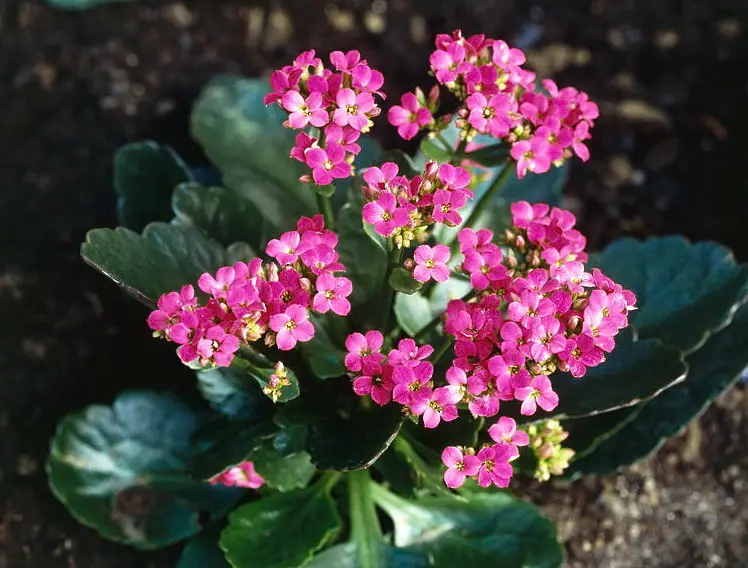
Flowering Kalanchoe, a new cultivar of Kalanchoe blossfeldiana, blooms in early spring with vibrant colors like red, orange, yellow, pink, and magenta. Thriving in bright indirect sunlight, it requires watering when the top 2 inches of soil are dry.
Use well-drained, aerated potting soil with a mixture of succulent & cactus mix and regular potting soil for optimal growth.
Twin Spine Cactus (Mammillaria geminispina)
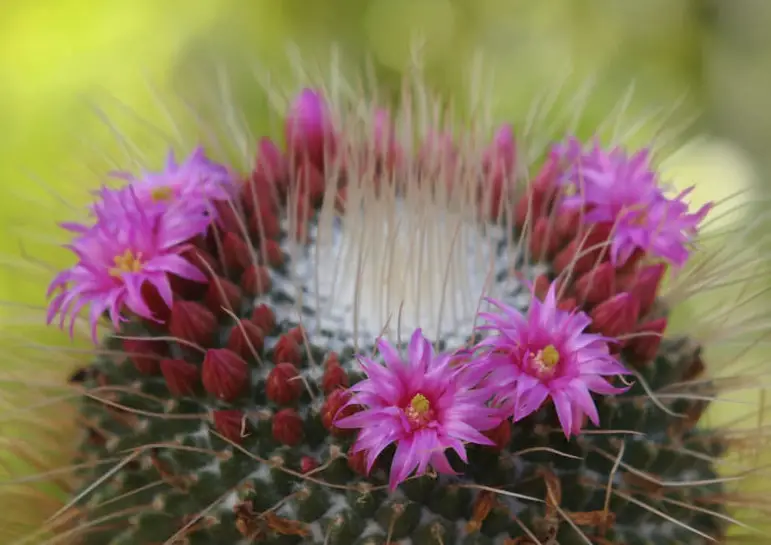
The Mammillaria geminispina, also known as the Twin Spine Cactus, grows in clusters up to 20 cm tall, with larger brown center spines and white radial spines. Its deep pink-hued, white-striped flowers bloom from late spring to midsummer.
It needs regular but cautious watering, especially in the summer, as it is drought-resistant. For best development, plant it in loose, well-draining soil that is rich in nutrients.
Aylostera Cactus
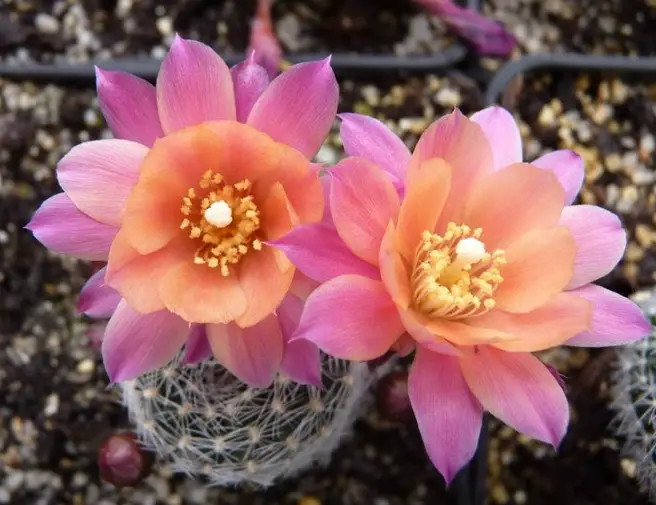
The Aylostera Cactus, a stunning variety, reaches up to 4 cm tall and 2.5 cm in diameter when mature. With green stems adorned with small spines, it blooms with beautiful pink flowers in spring.
Care involves partial shade to full sun exposure and regular watering in summer, sparingly in winter, using the soak and dry method.
Spider Cactus (Gymnocalycium Horstii)
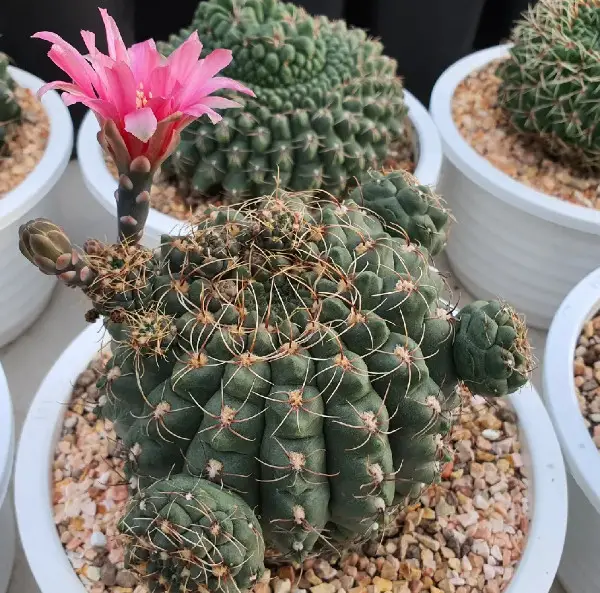
The Gymnocalycium Horstii, often known as the Spider Cactus, has a stem that can grow up to 30 cm tall and 60 cm in diameter. In April, pink to purple flowers borne on a brown, spherical plant.
Full sun exposure, regular watering that lets the soil dry in between applications, and well-draining soil to avoid waterlogging are all necessary for proper care.
Cleistocactus Tarantula Cactus
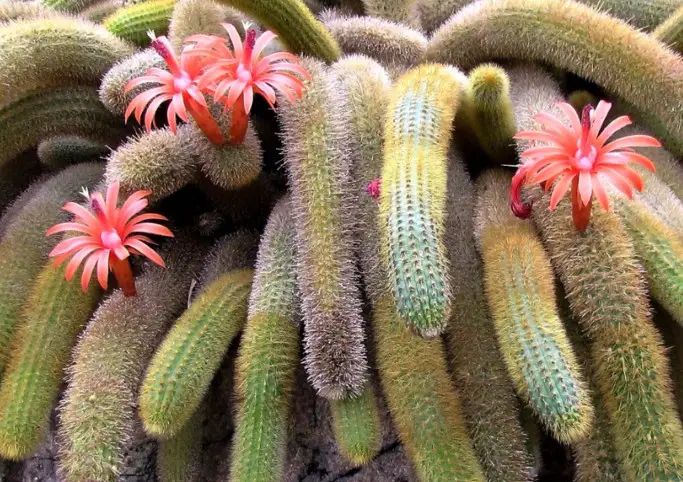
The Cleistocactus Tarantula Cactus, also known as the golden rat tail cactus, is a striking addition to hanging baskets. It produces spun white hairs resembling cobwebs and blooms with pinkish-orange to light pink flowers in spring.
With bright indirect sunlight and monthly watering, it thrives in cactus potting soil or a well-draining mixture. Fertilize during the growing season but avoid watering and feeding in winter when it goes dormant.
Kalanchoe Katapifa Tarantula
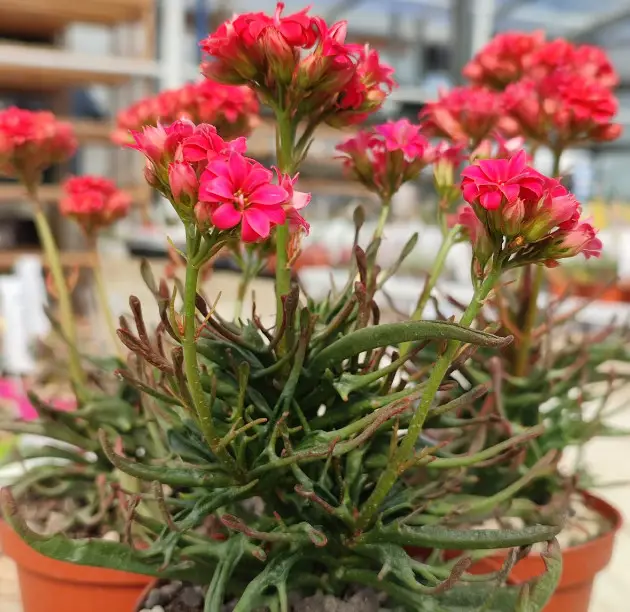
A perennial succulent with uneven, spidery leaves and bushy green foliage is the Kalanchoe Katapifa Tarantula. Bright pink or red flowers are produced by this spring and autumn-blooming plant.
It is simple to maintain, but for it to grow, it needs lots of sunlight, little watering, and succulent soil that drains well. For best drainage, use a mix that includes mineral grit, and water well, but only after the soil is totally dry.
Christmas Cactus
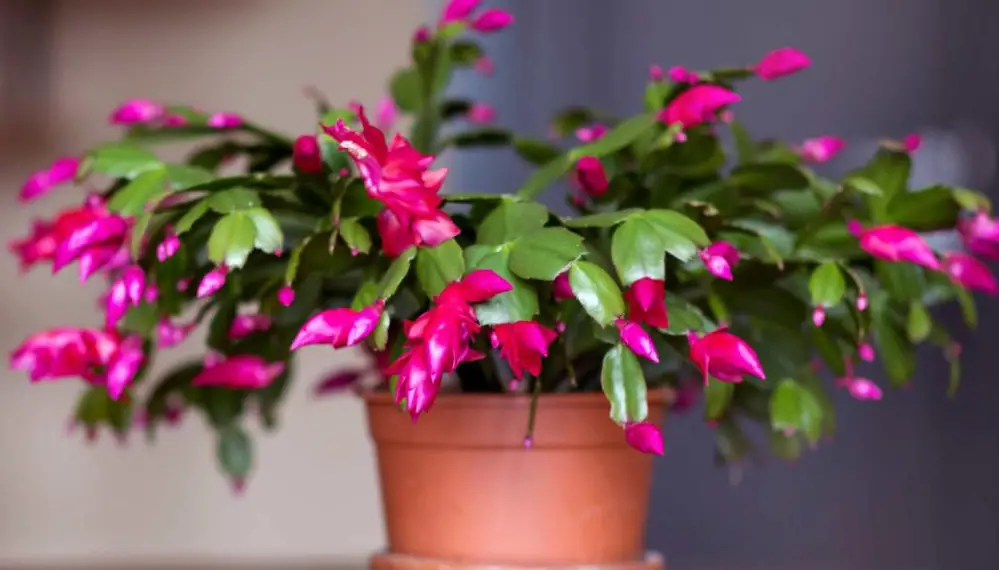
The Christmas cactus, with its vivid blossoms and rich green branches, is an easy indoor plant to grow. Growing to a height of 12 inches and a width of 5 inches, it adorns places with flowers that are pink, white, yellow, purple, or red, usually in the winter.
Its health is ensured by bright, indirect sunshine and periodic irrigation when the soil surface dries out. Blooming can also be encouraged by giving plants a little more darkness and a drop in temperature for six weeks.
October Daphne (Sedum Sieboldii)
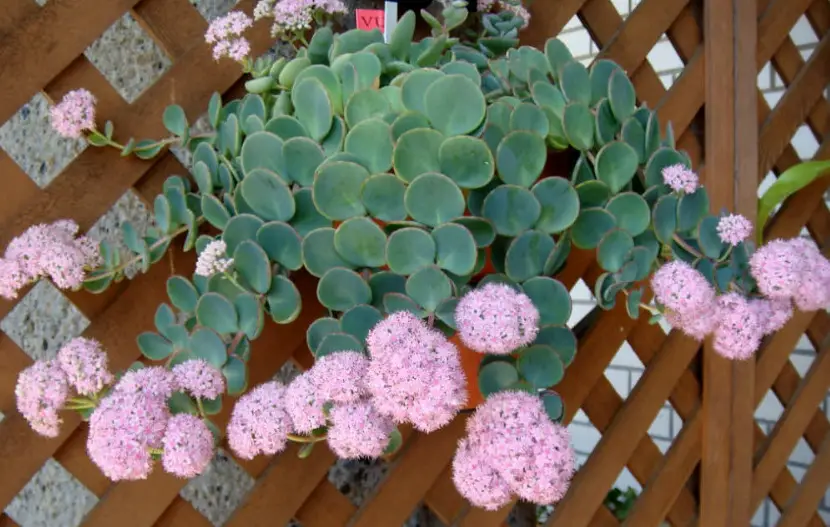
The October Daphne, a resilient perennial succulent, showcases rounded blue-green leaves and bursts of star-shaped pink blooms in early to mid-fall. Ideal for hanging baskets or ground cover, its foliage transforms into stunning shades of pink, red, orange, and yellow.
Thriving in full sun to partial shade, it requires moderate watering and well-draining sandy loam soil.
Orchid Cactus( Epiphyllum Spp.)
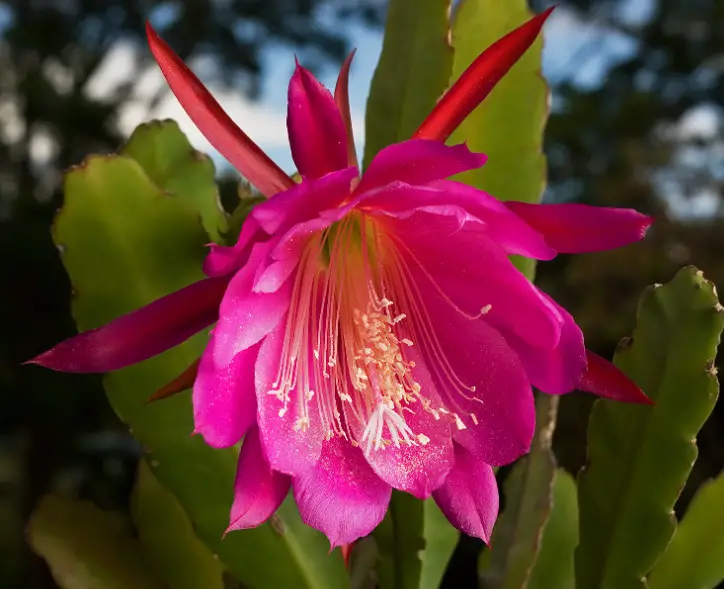
The Orchid Cactus, or Epiphyllum Spp., showcases stunning, cup-shaped blooms ranging in colors like pink, red, white, and yellow, measuring 4-8 inches wide. With broad, flat stems reaching up to 2 feet long and 2 inches wide, it’s perfect for hanging baskets or pots.
Thriving in bright, indirect light, water every ten days, and ensure well-draining soil mix for optimal growth.
Oscularia Deltoides (Pink Ice Plant)
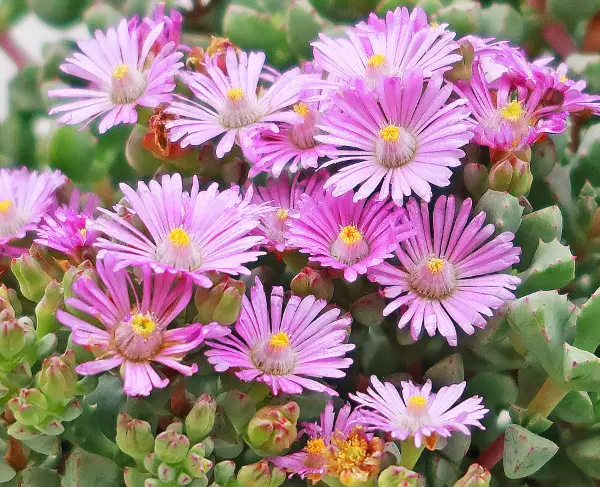
The adorable succulent groundcover with pink blossoms is called Oscularia Deltoides, or Pink Ice Plant. Its gently sprawling green to purple stems hold triangular blue-green leaves with pink and scarlet edges. The plant is covered in fragrant yellow-centered blooms that range in color from lavender pink to pink throughout the spring and summer.
It thrives in five to six hours of sunlight every day and needs cactus potting mix that drains well and contains perlite. It also needs modest watering. Its trailing growth is ideal for indoor displays, borders, or hanging pots; it lends elegance to any area.
Crassula Rupestris (Baby’s necklace)
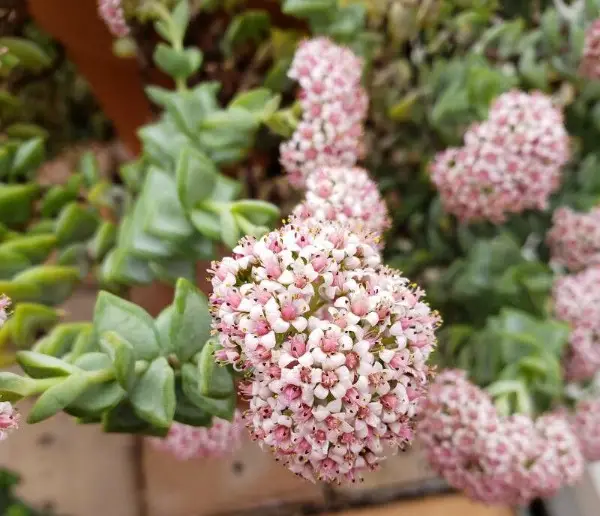
A delightful succulent native to South Africa, Crassula Rupestris is also known as Baby’s Necklace Vine or Rosary Plant. It can grow up to three feet tall with thin stems and little oval leaves. Its leaves turn reddish-yellow in the summer but otherwise have a gray tint.
It grows well in partial to full light and is hardy and low maintenance. It needs regular watering and a 2:1 ratio of perlite to cactus potting mix.
Desert Rose Plant (Adenium Obesum)
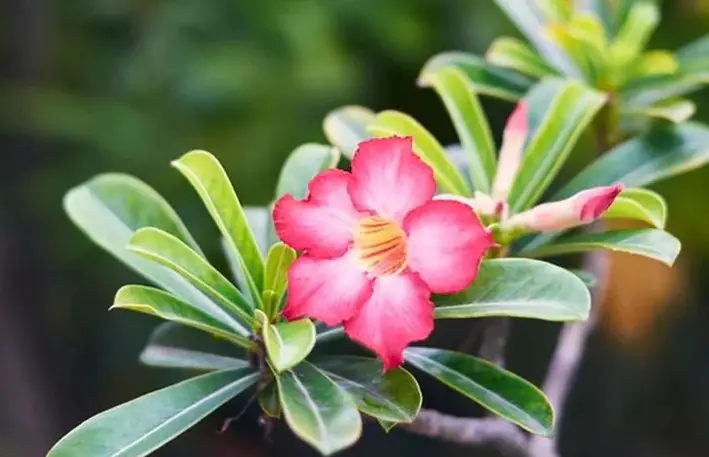
Originating in Africa, Madagascar, and the Middle East, the Desert Rose Plant, or Adenium Obesum, grows slowly, approximately 12 inches a year. It is highly valued as a bonsai specimen due to its thick succulent trunk, narrow leaves, and vivid pink trumpet-shaped blooms. Thanks to hybridization, it can produce flowers in a variety of hues.
It grows best in full sun and sandy soil that drains well; the amount of water it needs varies depending on the season. It is suitable for indoor cultivation in colder climes and outdoor ornamentation in warmer climates, while its sap can be toxic to people and animals.
Aeonium (Blushing Beauty)

Aeonium Blushing Beauty is a visually arresting succulent with pink flowers on long stalks that can grow up to 24 inches tall. Its leaves, a hybrid of two aeonium types, change color from lime green to burgundy in response to changes in temperature and light.
It blooms in late spring, when elaborate pink or yellow flowers emerge from the center of the rosette, branching out and generating offsets. The parent plant dies after flowering, but offsets keep growing and blooming.
People Who Read This Also Read:






